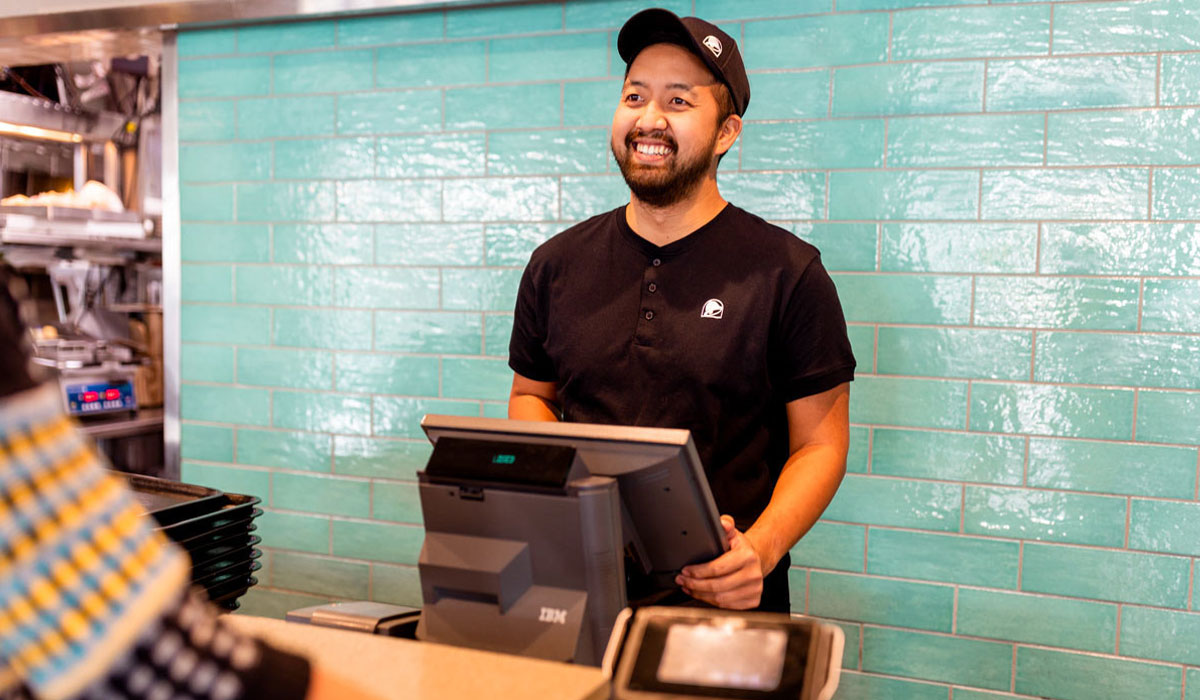The restaurant industry is laden with dilemmas just like this one. In today’s saturated landscape, consistent execution is key to gaining a competitive edge, whether that’s across two or 2,000 restaurants. It’s often the misstep that turns a hot, emerging chain into a sinking business when expansion begins.
Yet, tight operations are easier preached than performed these days. Rising labor costs and the rate of turnover, along with the standard challenges of maintaining quality control throughout a multi-unit system, can trouble even the best-intentioned operators. Not to mention how quickly social media spreads incidents and negative news, like a lone food safety scare. Controlling the message just isn’t what it used to be.
With all of that taken into account, as is often the case, this challenge opens a window of opportunity for restaurants hoping to differentiate themselves. Putting a continual focus on execution and systems, location by location, can separate top brands in a saturated climate. This will be especially true if some widely predicted economic factors take shape.
Olive Garden parent Darden said Monday at the ICR Conference that it’s already preparing for a recession. But there’s no reason to resign to the possibly as an inevitable setback. “In this recession, closures will be greater this time than they were last time, but there will always be good ideas and well-positioned brands that will be able to add units,” CEO Gene Lee said.
In preparation, Darden is taking a two-front approach to the biggest battle at hand: Labor. It’s working to attract, retain, and engage strong staff, but, at the same time, streamline operations to handle rising costs. And it’s going to ask higher-paid employees to do more.
While these hurdles will be approached differently by restaurant, there’s a consistent theme. Restaurants willing to invest in infrastructure and operations, be it layers of tech or staffing practices, are going to be well equipped when the pressure mounts. Many pundits believe this will ignite as today’s consumer dynamic shifts. If confidence tapers off during a recession, restaurants’ ability to cover traffic gaps with higher checks could be stressed. That’s why, as Darden observed, better-run restaurants will have a leg up. Because quality withstands trends and fluctuations.
It’s unlikely guests universally will tighten their wallets in terms of eating out (even during recessions restaurants prove a popular cost-effective outlet for consumers), but they will become even more discerning. And that’s where operations and execution will flood the picture yet again.
Zenput, a mobile platform that helps restaurants track operations using a phone or tablet, and is used by Domino’s, KFC, Jersey Mike’s, and Chipotle, conducted a study recently to understand the operational challenges facing restaurants. The goal being to uncover top barriers preventing franchise and corporate brands from consistent team execution and customer experiences. The data comes from 295 restaurant operators, everyone from ops leaders to managers, field staff, store managers, IT, C-suite execs, and owners. Forty percent of the pool comprised of franchisees.

Not surprisingly, it starts with employees
These were the leading barriers to consistent store execution and customer experiences cited by Zeput. All were employee-oriented.
- Rising labor costs: 48 percent
- Employee turnover: 44 percent
- Store employees not being properly trained: 39 percent
Quick-service operators were significantly more likely to cite employee turnover as a top barrier than full-service counterparts. The latter had a larger issue with restaurants not following operating procedures and employees not being properly trained.
This fits. Quick-serves generally flip staffs over more frequently due to seasonal shifts and part-time positions. Panera Bread CFO Michael Bufano told attendees at CNBC’s @Work Human Capital + Finance conference in July turnover was 130 percent at their restaurants.
As restaurant operators will attest, there really isn’t much that can be done to stem the tide of rising wage laws. It’s a dam that’s breaking, state-by-state, whether brands are prepared or not. As of July 1, 2019, the U.S. Department of Labor reported 30 states with minimum wage requirements higher than the federal per-hour standard of $7.25. That number isn’t going to stand pat.
Let’s look at the results further. After the top three, here’s how it broke down. The question in full was, “What are the primary hurdles to driving consistent team execution and customer experiences across your units/stores?”
- Not all stores correctly follow operational procedures: 36 percent
- Recruiting qualified/skilled talent: 37 percent
- Not resolving issues quickly enough: 34 percent
- Lack of visibility into degree to which each store is complying with operating procedures: 34 percent
- Not identifying issues early enough: 33 percent
- Store employee productivity/efficiency isn’t high enough: 33 percent
- Breakdown of communication between stores, district leaders, and HQ: 32 percent
- Field manager productivity/efficiency isn’t high enough: 26 percent
- Government regulations: 21 percent

A confidence question
Overall, Zenput found chain restaurant operators to have relative confidence in their visibility into store operations, with more than 90 percent believing they have “very clear” or “somewhat clear” control. Notably, only 31 percent of that group elected for “very clear.”
It’s the age-old concern of restaurant expansion, particularly with franchises (at least in terms of general perception). Can you hand the keys to your great idea to someone else and see it flourish? Running a successful restaurant and building infrastructure so others can do so are very different things.
In Zenput’s study, less than one in five operators felt their stores were “very efficiently” complying with operating procedures and key initiatives. So, the visibility factor wasn’t necessarily translating into compliance confidence.
Full-service brands came in at just 11 percent. Quick-service restaurants clocked 27 percent.
The areas restaurant operators said stores are performing best were food-safety protocols (82 percent believe their restaurants are in strong compliance) and brand standards (79 percent). Training processes (72 percent) notched the lowest rate of compliance.
While that doesn’t sound overly troubling, the notion that nearly one out of five restaurants may not be in compliance with food safety protocols or brand standards would keep any multi-unit restaurant operator up at night. It stacks up quickly.
Quick-service restaurants estimated a higher percentage of their stores in compliance among all activities. The largest gaps for limited-service chains versus sit-downs came with brand standards and marketing promotions.
Zenput said a core part of the visibility issue stems from how operators report being able to check in. Traditional tactics remain in use (almost half of operators are communicating via phone calls and text messages). Only 20 percent said they deploy software to improve visibility.
Roughly a quarter of quick-service operators are leveraging software compared to just 15 percent of full-service operators. More than half (51 percent) of operations with 50-plus units are still chatting through phone calls/texts versus 39 percent of smaller companies.
“What is the primary way you are getting visibility into store/unit operational execution?
- Phone calls or text messages: 48 percent
- Email: 22 percent
- Software: 20 percent
- Paper checklist: 6 percent
- Other: 3 percent

A food safety conundrum
Here’s one of the interesting things about food safety. Restaurants have more tools in place to prevent incidents than ever before. And yet they’re also more vulnerable, thanks to social media. Just look at some of Chipotle’s issues a couple of years back. Every case hit the Wall Street stock screener like the sky was on fire.
In Zenput’s survey, nearly all restaurant operators (89 percent) said a customer food safety issue could put their business at risk and lead to negative sales. When you consider shrinking margins, the ability to quickly identify issues and address them is essential. Only 34 percent of respondents said they were very confident their operation was able to do just that. This also appears to be getting worse. In a fall 2018 survey, Zenput found that 50 percent were very confident. That’s a significant year-over-year drop-off. And you can probably blame labor issues once again. Turnover breeds inconsistent performance and a lack of accountability.
Quick-service operators proved somewhat more confident in their ability to address safety concerns quickly, Zenput noted. Forty percent said they were “very confident” in their ability identify issues (versus 28 percent of full-serves).
To the earlier point, though, food safety protocols turn in the highest level of compliance. Simply, it’s one area restaurants cannot afford to underperform. Less than one in four of Zenput’s respondents (23 percent) reported being able to correct potential food safety concerns within 1–2 days once they were identified. Thirty-one percent said it takes between one to four weeks. A relatively higher potion of full-service brands (36 percent) said it takes more than a week to tackle food-safety concerns.
Are audits the answer?
Restaurant field employees know the schedule well. Much of their time can be consumed by audits and everything that entails. But is the investment producing an acceptable return? While audits are essential to ensure restaurants are delivering a consistent experience across units, most operators do not feel audits are being completed “very effectively” at the store level, according to Zenput. Just 22 percent (and 17 percent of sit-down chains) believe so.
Naturally, size is a factor. Of those with less than 50 locations, 25 percent said audits were efficiently performed compared to 17 percent with 50-plus. Audits also appear to be a drain on field staff productivity—82 percent of operators (and 85 percent of full-service ones) said they believe employees are spending too many hours on lower-value tasks when they could be focusing on higher-value activities, like coaching.
Only 27 percent of operators said their company was embracing technology to automate various aspects of their business “to a great extent.
On average, field employees are clocking more than 30 combined hours per week on in-store audits, preparing reports, and following up with restaurants to ensure corrective actions were taken. If you’re truly putting in 40 hours flats, that’s less than 10 hours dedicated to some serious levers of differentiation—training, personal growth, organization initiatives, etc.
Smaller operations are spending more time on performing audits/assessments (11.7 hours) and following up (11.3 hours) than larger companies.
The question to ask: Is this how you want your field employees to spend their 40 hours?
Quick-service restaurants
- Performing in-store audit/assessments: 11.2 hours
- Preparing reports to submit to HQ: 9.3
- Following up with stores to ensure resolution: 11
- Other tasks and responsibilities: 8.5
Full-serves
- Performing in-store audit/assessments: 10.8
- Preparing reports to submit to HQ: 10
- Following up with stores to ensure resolution: 10.8
- Other tasks and responsibilities: 8.4

Automation is there for the taking, but few are taking it
As Darden’s Lee suggested, restaurants are going to start asking more and more of employees in the coming months. If they’re going to pay more (which they inevitably are) the truth is that many brands will need to hire fewer employees, which means additional tasks shouldered by current staff. Restaurants will need to get more out of every unit and field employee up and down the organization.
“This means embracing new strategies, processes, and automation—technologies that will enable staff to focus on higher-value activity and do it more efficiently,” Zenput said.
Despite that possibility, only 27 percent of operators said their company was embracing technology to automate various aspects of their business “to a great extent. It was higher among corporate stores (33 percent) than franchisees (18 percent). Smaller brands also were more likely to classify their operation’s culture as automation-forward. That’s probably more a product of costs than anything else. Larger chains face added difficultly implementing new systems to automate tasks previously performed by employees. Think of how much it would run to replace tablets at 40 restaurants versus 4,000. Not only the equipment, but the training and compliance concerns, too.
But that’s not to discount the potential. Communication between stores, district leaders, and HQ remains critical to any multi-unit brand’s success. Automation could help, and there’s runaway aplenty to separate from competitors.
Yet most operators continue to use traditional tactics to get visibility into store compliance, as almost half of operators are primarily doing so via phone calls and texts. Only one in five restaurant operators said they were using organizational software.
However, of those who said their brands have embraced automation at least somewhat, 83 percent noted their experience has been a positive one. Only 10 percent of operators said their back of house doesn’t use tablets, meaning restaurants are positioned to implement automation strategies going forward. A strong portion of companies are investing in mobile technology solutions. As you can see below, there are results to chase.
What can automation do?
Very effective store operating procedure compliance
- Those embracing automation: 40 percent
- Everyone else: 14 percent
Very clear or somewhat clear visibility into their stores and units:
- Those embracing automation: 95 percent
- Everyone else: 86 percent
Can quickly or very quickly identify issues in their operation
- Those embracing automation: 87 percent
- Everyone else: 77 percent
Communication is a barrier to consistent execution
- Those embracing automation: 26 percent
- Everyone else: 37 percent
Very confident or somewhat condiment in their ability to identify food safety concerns before they become an issue.
- Those embracing automation: 98 percent
- Everyone else: 86 percent
Looking to the future
Taking all of this into account, restaurant operators, fittingly, tapped employee productivity as the top-of-mind concern (48 percent) for 2020. Improving store-level compliance with operating procedures (43 percent) was next, followed by boosting field team productivity (42 percent), and improving the completion of tasks at the store level (42 percent).
Concerning mobile-enabling tech, more than half of operators (57 percent) said their back-of-house tablet usage would remain the same over the next year, including 64 percent of sit-down chains. However, 37 percent of quick-serves said their stores would be adding more tablets in 2020 (versus 27 percent of all restaurants).
How it stacks up (in the next 12 months, which of the following are top organization priorities for improving operational execution?):
Improving store employee productivity
- Quick-serves: 43 percent
- Full-serves: 53 percent
Improving field team productivity:
- Quick-serves: 45 percent
- Full-serves: 39 percent
Improving task completion at stores
- Quick-serves: 34 percent
- Full-serves: 50 percent
Improving compliance with operating procedures
- Quick-serves: 47 percent
- Full-serves: 40 percent
Improving supply chain controls
- Quick-serves: 38 percent
- Full-serves: 40 percent
Employee training
- Quick-serves: 37 percent
- Full-serves: 42 percent
Formalizing/documenting guidelines and procedures
- Quick-serves: 32 percent
- Full-serves: 32 percent
Mitigating food safety risks
- Quick serves: 32 percent
- Full-serves: 32 percent
Improving execution of marketing LTOs
- Quick-serves: 29 percent
- Full-serves: 31 percent







